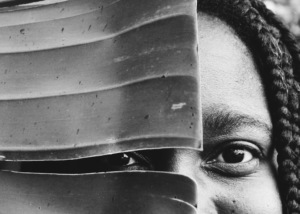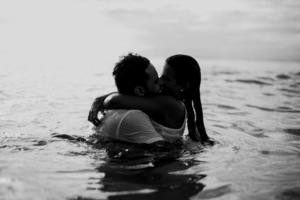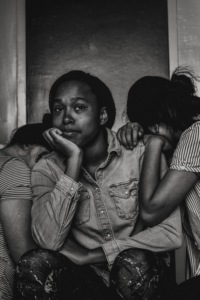Subversive Love: Morrison’s Radical Black Subjectivity

zainab mlongo on Unsplash
“Stories and works are largely incomprehensible without reference to the emotions systems.”
—Patrick Hogan, Affective Narratology: the Emotional Structure of Stories
Toni Morrison has stated that one of her primary goals as a writer is to work with language in such ways that it can “enunciate race while depriving it of its lethal cling” of racism in her novels about African American life. It is, she says, a question she still probes.
Yet it’s quite possible that she has already created this terrain for the readers of her novels. By creating atypical figurations of black characters; relegating white people’s racism to the outer edges of the stories; developing highly charged emotional events and actions; and deftly using language, sound, image, time, and space, Toni Morrison offers a reading experience that can deprive race of the “lethal cling” of racism. And this experience is largely emotional.
From The Bluest Eye (1971) through God Save the Child (2017), every story of Morrison’s is fundamentally about the emotional experiences and reflections of her African American characters. And by “fundamentally about,” I mean what is frequently called the plot, but the more effective term for Toni Morrison’s work is what I call emotional story structures. Furthermore, “love” in various manifestations is often the central dramatic question.
In this blog cluster on Emotional Story Structures, we will explore the dramatic emotions presented in the novels as well as the readers’ emotional experience as they read and reflect on incidents and episodes developed in Beloved, Jazz, and Paradise. There are 7 blogs in this cluster because the emotions of readers are key to Morrison’s aims as a writer. And, thanks to some recent research on cognitive emotional experience, we actually have a sort of map to help us find ourselves among the characters in their feelings. Another important thread in this cluster is the African American tradition of the blues. Go to The Roots of Toni Morrison’s Durative Blues to get a sense of how cultural traditions and practices figure into the figurations of love.
In a broadcast program for The Nation in 2004, Morrison joined Cornell West to discuss “Blues, Love, and Politics.” At that time Professor of African American Studies at Harvard and author of Prophetic Fragments and Race Matters, West stated: “I think, in the history of black people, we’ve been so hated that love takes on subversive status.” And Morrison (then an Endowed Professor at Princeton directing an interdisciplinary arts program) agreed: “totally renegade.” This historical conversation gives us the key, I think, to what I will call the emotional story structures that developed across the trilogy.
Hated, unfree: African Americans have experienced variations of these abominations for generations, and yet still find ways to persist and to flourish. In Audre Lorde’s sense (“The Uses of the Erotic”), the Beloved project evolved to narrate stories of Black eros, which Lorde defines as “the personification of life in all its aspects—born of Chaos, and personifying creative power and harmony . . . the lifeforce” [sic]. For example, frequently finding themselves bereft of an ancestral past, shorn of a viable future, and surviving in a tenuous present which might explode at any time, characters in Beloved, Jazz, and Paradise find themselves seriously challenged to figure out what Jazz’ narrator says they must: “When to love something and when to quit. If you don’t know how, you can end up out of control or controlled by some outside thing” (Morrison, Jazz 9).

Edward Eyer. Pexels
In the trilogy, Morrison explores first, second, and third-generation ex-slaves and their migrations to new territories. How did people love one another? Consider Morrison’s discussion from this Paris Review interview in which she is discussing jazz music in connection with love and freedom:
They are talking about love, about loss. But there is such grandeur, such satisfaction in those lyrics . . . they’re never happy—somebody’s always leaving—but they’re not whining. It’s as though the whole tragedy of choosing somebody, risking love, risking emotion, risking sensuality, and then losing it all didn’t matter, since it was their choice.Exercising choice in who you love was a major, major thing. And the music reinforced the idea of love as a space where one could negotiate freedom. (Italics added)
In Upheavals of Thought: The Intelligence of Emotions, Martha Nussbaum argues that the “tumultuous” emotions such as love, which have traditionally been excluded from moral and ethical philosophy, are actually “intelligent responses to the perception of value” in our social, moral, and personal lives, a notion which Morrison’s work probes deeply. All of the possible variants of love’s circulation–e.g., desire, neediness, fullness, devotion, dread, revulsion, yearning become Morrison’s tropes for what Bell Hooks cites as “our struggle for radical black subjectivity” (Yearning 29).

Mathilda Khoo Unsplash
This struggle is apparent in Sethe’s wanting all her children to be safe to such an extent that she tries to kill them in Beloved; in Joe’s need to possess his young mistress, Dorcas, so strongly that he shoots her in Jazz; and in the Morgan brothers’ violent stalking of outsider women in what had become a desperate effort to preserve their dream of community in Paradise. However, such examples are juxtaposed with another orientation, one which is captured in Paul D’s reflection in Beloved that “you protected yourself and loved small” because loving anything larger than a grass blade or beetle could “split you wide open” (Beloved 162). In all three novels, extreme attractions to and repulsions from the neediness of love are played out dramatically in characters’ and narrators’ experiences and reflections.
Responses Invitation: Reflect, Write, Post:
African American poet and activist Audre Lorde writes that the erotic is not simply equivocal with lust. Rather, it is “the personification of love in all its aspects—born of Chaos, and personifying creative power and harmony . . . the lifeforce” (Lorde, “The Uses of the Erotic” in Sister Outsider: Essays and Speeches). As we proceed to consider the “building blocks” of emotional experiences in prose fiction, l invite you to think and/or post about love and the generation of freedom and power.
How can love generate freedom? power?
And don’t forget to sign up for the Newsletter at the bottom of any page!
